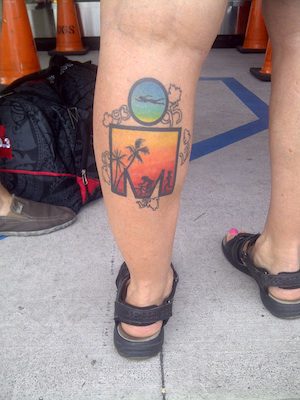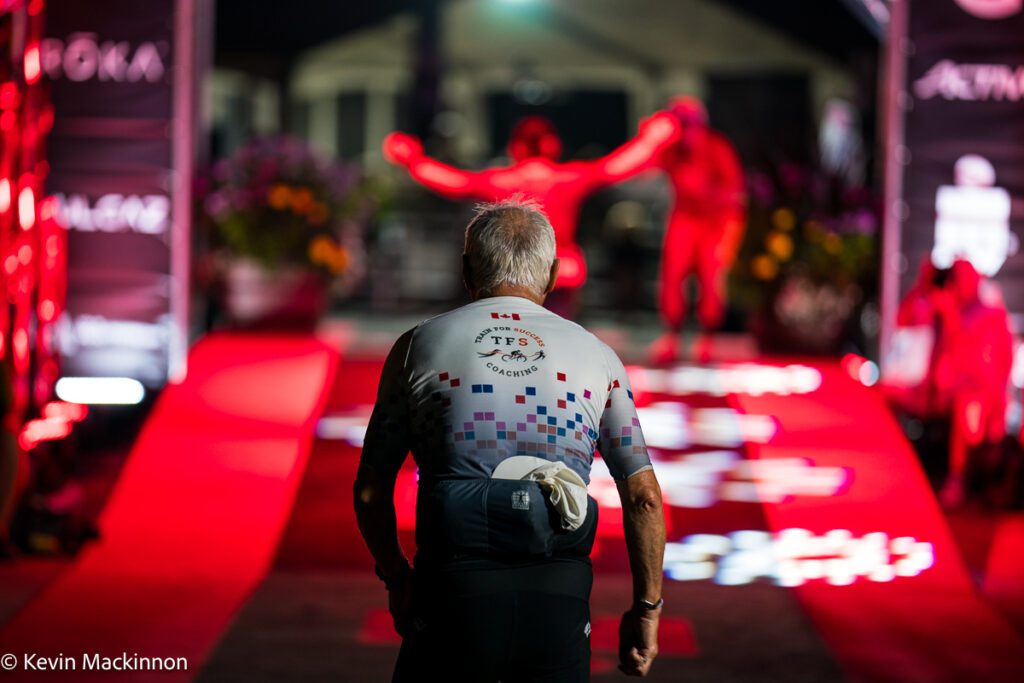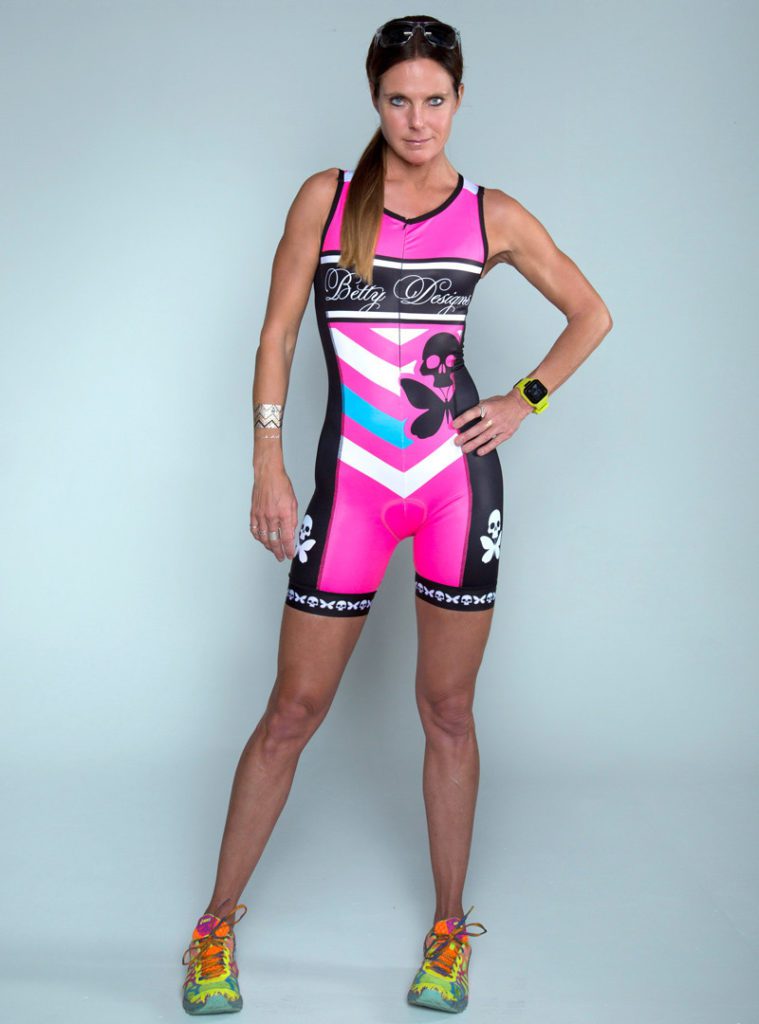5 things that make triathletes different
Sure, we might not have the history or the numbers of some other sports, but we certainly are different!
 Photo by:
Kevin Mackinnon
Photo by:
Kevin Mackinnon
Sure, triathlon isn’t nearly as popular a sport as hockey or soccer. And, yes, while Simon Whitfield is known to so many, he’s not Wayne Gretzky. Even though triathlon is a relatively new sport with fewer participants than others that Canadians participate in, it has made an impact on our national sports scene and has created a distinctive culture. Here’s how:
1. Symbols

According to the social sciences website Libretexts, everything a person does in life is based on, and organized through, cultural symbolism. For many Canadian triathletes, along with people who don’t know the difference between an PowerBar and aerobars, that symbol is the M-dot. The symbol also happens to be the legal property of the company that owns Ironman, which is Advance. The M-dot can be found anywhere you find a triathlete and there are royalties to be collected.
From car hitch cover plates, to water bottles, to those cultural artefacts including the Ironman watch or the M-dot tattoo, you can see evidence of triathlon (well, Ironman) in the everyday world. Beyond that, however, you’d be hard-pressed a symbol that represents triathlon.
2. Vocabulary
Another key component of a culture is the use of a unique language. Triathletes speak a language some other endurance athletes may understand, but would have the rest of the population scratching their heads.
To name a few terms, we have: brick (not the building kind), draft (not the sudsy kind), DQ (not the ice cream kind) and disc (not the audio kind). The list can go on.
3. Values, Beliefs, Traditions
Triathlon culture is different because of the disproportionate emphasis on training versus competing.
Let’s look at adult recreational slo-pitch and hockey, for example. Both have a much higher competition-to-practice ratio than triathlon. When Canadians participate in these sports it is almost always in a game situation. When in season, there is usually a game per week. On occasion there are tournaments where hotels are booked, alcohol is consumed and competition is held. That differs from triathletes who likely have a ratio of 100 hours of practice for every hour of competition.
As an average Canadian triathlete, you are probably swimming at least three times a week for most of the year. That’s a heck of a lot of training time for what is likely only about three or four races per season where you are swimming in competition for about a total of two hours. And that’s only for one of the three disciplines.
So how does that ratio of training to racing impact triathlon culture? Well, as it turns out, it makes most triathletes take their competitions more seriously than other sportspeople. After all, for most triathletes, each race is the culmination of substantial financial, physical and time commitment. Compare that to the average beer league hockey player who can just pack the equipment bag, drive to the rink (although that can be 10 minutes or over an hour), play a game and be home in time to go to help their kids with homework.
Because participating in a triathlon is such a big deal, they are “called” events, something on par with a Springsteen concert or total solar eclipse. These special events come, at least for many triathletes, with a lot of pressure. Nights on end of poor sleep result as we worry over choices like one- or two-piece suits, gels or solid food on the bike and 85 or 90 psi in our tires. And this is just for a regular distance race. When you up the ante and “go Ironman,” the self-imposed pressure and resultant obsessing is on par with NFL’er playing in his first Super Bowl.
4. Cross-Cultural Differences

No doubt the triathlon mindset and accompanying culture is different than in recreational hockey and slo-pitch, but even when you compare triathlon culture with that of other endurance sports such as cycling and running, there are clear differences.
Probably the biggest differences exist between triathletes and cyclists. If you have ever been on a beach five minutes before the gun goes off for a triathlon, the nervous energy expresses itself in a plethora of ways. You can see a lot of it as athletes, clad in black neoprene, hug each other. You can see it as some athletes stealthily take one last pee, as they wait to jump in the water. And then there is the phrase, “I hope I can finish,” an innocent declaration of optimism and trepidation. Truer words were never spoken because, whether that person is on the beach at Petawawa, Wasa Lake or Waskasieu, the main goal for many athletes is just to finish.
Compare that to the start line of a road race, time trial, or crit where there might be some chit-chat, but it’s likely nervous smack talk or excuse-dropping. Nobody says, “I hope I can finish.” There’s no hugging either.
When comparing running culture to triathlon culture there are differences as well. You might not see it at the start line of a race, but the differences are revealed while they are shopping for their gear, according to Phil Ellis, who has been selling shoes and other running gear to both runners and triathletes for decades at Peninsula Runners in BC’s Lower Mainland. He has observed that triathletes seem to be more product and performance-focused than his running customers.
Another cultural difference between triathlon and their other endurance sports brethren is a phenomenon that can be seen at the finish line of many triathlons, especially at Ironman races. It is very common to have the race winners present during the last hour to cheer on the final finishers. Canadians hitting the finish line at an Ironman in the past 20 years can vouch for the fact that champion Lisa Bentley spent at least as much of her energy cheering on athletes between 11 PM and midnight as she did racing earlier that day. You’d likely not see Eliud Kipchoge or Jonas Vingegaard, hanging out at the finish line hours after their race was done.
5. Dress and Gear

Sociologists say how a group dresses can offer rich insight into a culture as clothing is shaped by, and reflective of, a combination of many characteristics. No doubt this is the part of triathlon culture that sets us apart from most other endurance sports participants. Sure, we swim in goggles, cycle on bikes and run in running shoes. But there is a high degree of specialization in triathlon. For example, there is the triathlon wetsuit, designed by Dan Empfield, which has become an essential part of a triathlete’s kit. Underneath the triathlon wetsuit is likely a piece of clothing you would probably never see a “pure” runner or cyclist wear, a one-piece triathlon suit. Perhaps not as aero as a cycling speed suit, but a lot more practical with a chamois that won’t chafe during the run, and plenty of pockets which is more suited to hours, not minutes of competition.
When it comes to cycling, of course, we have aero bars, something that most road cyclists eschew (especially on group rides). Yes, you can go to a cycling time trial and see this gear as well, but it is much more common in triathlon culture.
Finally, there are triathlon-specific items for the run. Our sport has lace-less running shoes with loops on the heel for speedy transitions. For athletes that prefer traditional runners, there are speed laces and lace locks.
Into the Future
Although as a triathlete, some Canadians may consider you a bit strange for doing what you do, as opposed to doing “normal” activities like hockey, golfing, curling or binge-watching Netflix. Even though some folks may not understand what you mean when you go for a brick, or why you subsist on energy bars and coloured sugar water instead of coffee and doughnuts, take heart that you are not alone. We as triathletes have made a mark on both the Canadian athletic scene.
Kevin Heinze is a regular contributor to Triathlon Magazine, the host of the endurance sports podcast Fitspeek and a defending beer mile champion.
